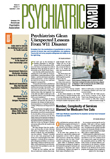The federal government has issued regulations designed to make electronic health care records and electronic prescribing more attractive to physicians.
The regulations are spelled out in two rules issued separately in August by the Centers for Medicare and Medicaid Services (CMS) and the Office of the Inspector General (OIG). They were required by the Medicare Prescription Drug, Improvement, and Modernization act of 2003.
The new rules, which will become effective on October 7, create new exceptions and “safe harbors” to existing federal fraud and abuse laws governing the provision of electronic health information technology and services by health plans and other entities to physicians and hospitals for handling electronic health records and electronic prescribing (e-prescribing).
In some respects the CMS and IOG rules mirror each other, but they are dealing with separate sections of the Social Security Act. The CMS rule deals with prohibitions on physician self-referral, while the OIG rule addresses prohibitions on kickbacks.
Specifically, the CMS rule creates two exceptions to the federal prohibition on physician self-referral that will protect doctors from violating that law when they accept compensation in the form of computer products and services. One exception allows physicians to accept items and services used solely to facilitate electronic prescribing; the other exception allows them to accept information technology, software, and training services used predominantly to handle electronic health records.
The scope of donors and recipients included in the final rule is considerably broader than originally proposed by CMS last year.
The OIG rule is similar, establishing two “safe harbors” from the federal anti-kickback statute to protect arrangements in which certain health care organizations provide specified recipients with remuneration in the form of technology and services used for electronic prescribing and electronic health records systems.
A buzzword in the field of health information technology is“ interoperability,” the ability of information systemsto“ talk” to each other to allow seamless transfer of information across the health care landscape—a concept that presupposes wide-spread adoption of computerization. Yet one of the barriers to widespread adoption is the reluctance of physician groups to invest in technology that may not be compatible, and hence will have to be replaced at some point.
Consequently, some health plans and other entities may offer physicians hardware and software for e-prescribing as well as reimbursement for first-year subscription fees; such transactions could be interpreted as violating federal laws, hence the importance of the new rules providing exceptions and safe harbors.
“These important regulations will help promote the adoption of essential health information technology while protecting the federal health care programs and beneficiaries from fraud and abuse,” said Health and Human Services Inspector General Daniel Levinson in a statement.
In comments submitted to CMS last year, APA Medical Director James H. Scully Jr., M.D., said APA generally supports the movement toward e-prescribing and electronic health records. But he expressed a range of concerns including the potential for federal sanction of physicians who receive in-kind donations of computer technology and services related to e-prescribing.
Until adequate exceptions and safe harbors are provided under existing federal laws, “any physician dealing with Medicare patients who accepts value inkind such as software, hardware, Web access, training, educational materials, discounts, rebates, or other assistance related to e-prescribing infrastructures may be subject to federal sanctions,” he wrote.
“Managed care entities, software, computer hardware, and Web services companies will make various offers to physicians to make their products competitive and otherwise induce them to adopt e-prescribing practices,” Scully wrote. “E-prescribing requirements should not force psychiatrists to either pay the entire cost of an e-prescribing system or accept assistance from external entities but risk potential federal action.”
The OIG's final rule on e-prescribing is posted at<www.oig.hhs.gov/authorities/docs/06/OIG%20E-Prescribing%20Final%20Rule%20080806.pdf>. The CMS's final rule is posted at<www.cms.hhs.gov/PhysicianSelfReferral/Downloads/CMS-1303-F.pdf>.▪
